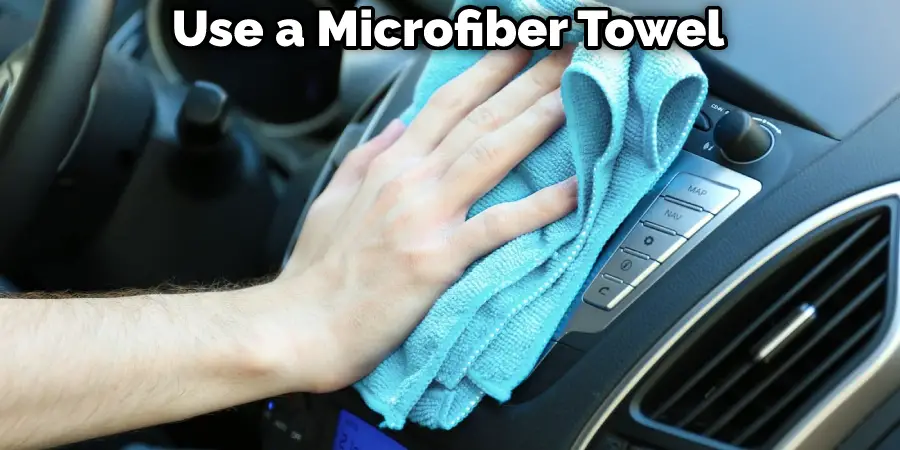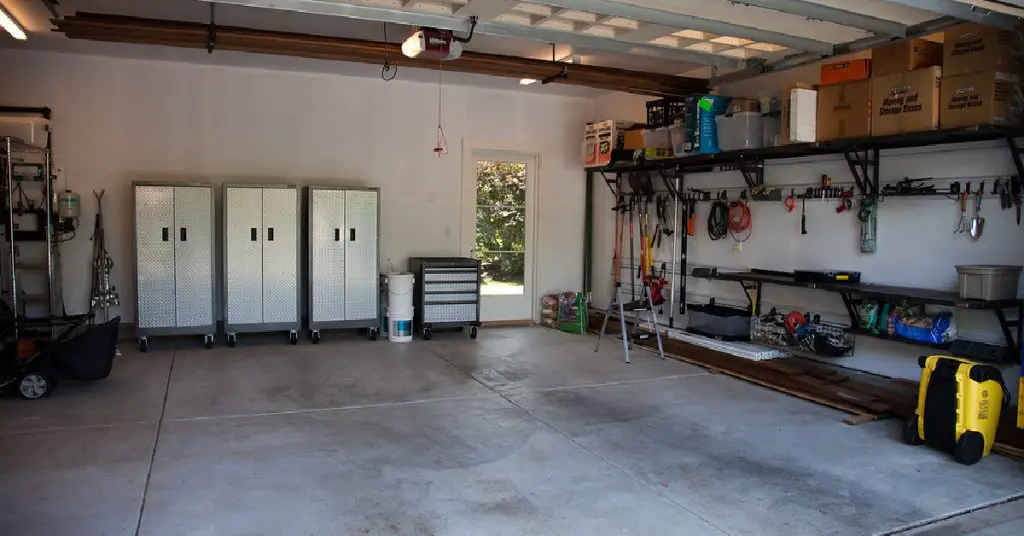Keeping your car clean is important not only for its appearance but also for its longevity. Regular washing helps to remove dirt, grime, and other contaminants that can cause damage to your car’s paint and exterior. However, finding a suitable location to wash your car during winter can be difficult due to freezing temperatures and inclement weather conditions. Fortunately, washing your car in the garage is a viable option that provides protection from the elements and saves time and money.

This article will explore different methods and tips for washing your car in the garage, ensuring a safe and effective cleaning for your vehicle.
Benefits of Washing Your Car in the Garage
There are several benefits to washing your car in the garage:
Saves Time and Money
Washing your car in the garage eliminates driving to a car wash or waiting in line for a self-service bay. This saves you time and money on gas and car wash fees.
Protection From Weather Elements
Washing your car in the garage protects it from the harsh winter elements, such as snow, ice, and salt, that can cause damage to your car’s paint and undercarriage.
Environmentally Friendly
Washing your car in the garage is environmentally friendly as it conserves water and prevents chemicals from entering storm drains and harming the environment.
Greater Control Over the Cleaning Process
Washing your car in the garage gives you greater control over the cleaning process, ensuring a more thorough cleaning and preventing damage to delicate parts of your vehicle.
Convenience
With the right tools and supplies, washing your car in the garage can be a convenient and efficient option that fits your schedule. You can also personalize the cleaning process to fit your preferences and needs.

5 Effective Methods for How to Wash Car in Garage
There are a few methods for washing your car in the garage:
- Rinseless washing: This method involves using a rinseless car wash solution, a bucket of water, and microfiber towels to wash your car without running water. Rinseless washing is a water-conserving and environmentally friendly option for light to moderate dirt and grime.
- Traditional bucket and sponge washing: This method involves using a bucket of soapy water, a sponge, and a hose or water source to rinse your car. Traditional bucket and sponge washing is a more thorough and effective cleaning option but requires access to a water source.
- Pressure washer washing: This method involves using a pressure washer to clean your car’s exterior. Pressure washing is an efficient and effective option for heavy-duty cleaning but can be costly and requires space and equipment.
- Detailing sprays and quick detailers: Detailing sprays and quick detailers are spray-on products used to clean and shine your car’s exterior. They are a quick and convenient option for maintaining the appearance of your vehicle in between washes.
- DIY car wash kit: DIY car wash kits are all-in-one kits that include all the necessary supplies and equipment to wash your car in the garage. They can be purchased online or at car care stores and customized to fit your needs and preferences.
10 Easy Step-by-Step Guide for How to Wash Car in Garage
Step-by-step guide for washing your car in the garage:
Tools and Supplies Needed
- Buckets
- Sponges or microfiber wash mitts
- Absorbent towels for drying
- Car washing soap
- Space heater (optional)
- Rolling water catchment system (optional)
Step 1: Gather Your Supplies
Depending on your chosen method, gather all the necessary supplies, including a bucket, car wash solution, microfiber towels or sponge, water source, pressure washer (if using), and detailing sprays (if using).

Step 2: Choose a Suitable Location
Pick a location in your garage with sufficient space and ventilation. Ensure the location is well-lit and has a nearby electrical outlet for necessary equipment. If you choose to use a rolling water catchment system, ensure the location is within a 10-foot radius of a garage floor drain or other suitable drainage systems.
Step 3: Prepare the Vehicle
Before starting, remove any loose debris or dirt from your car’s exterior using a soft-bristle brush or a blower. Close all windows and doors to prevent water from entering the interior. Also, turn on the space heater to warm up the car and keep it warm.
Step 4: Apply Soap Solution
If using a traditional bucket and sponge washing method, fill a bucket with water and add a car wash solution. Dip a sponge or microfiber towel in the solution and apply it to the car’s exterior. Start from the top and work your way down, ensuring you cover all areas. If using a pressure washer, attach the soap nozzle and apply the soap solution to the car’s exterior.
Step 5: Rinse Off the Soap
Rinse off the soap solution using a hose or pressure washer (if using). Start from the top and work your way down, ensuring that all the soap is removed. Do not use a pressure washer on your car’s windshield.
Step 6: Dry the Car
Use a microfiber towel or chamois to dry your exterior. Start from the top and work your way down, ensuring that you dry all areas.
Step 7: Apply Detailing Sprays
Use a microfiber towel to apply detailing sprays or quick detailers to the car’s exterior. These sprays add shine and protection to your car’s paint.

Step 8: Clean the Wheels and Tires
Use a separate sponge or towel to clean the wheels and tires. Apply a wheel cleaner and let it sit briefly before rinsing it off. Apply a tire cleaner to the tires. Let it sit for a few minutes, then scrub with a tire brush and rinse off the solution.
Step 9: Dispose of Waste
After washing your car, properly dispose of any waste materials. Empty the bucket and wash any towels or sponges used in the washing process. Remember to always properly dispose of any waste materials after washing your car.
Step 10: Store Equipment
Clean and store all equipment used in the washing process in a designated location in your garage. Ensure to properly store all equipment used in the washing process in a designated location.
Following these steps will ensure you wash your car effectively and efficiently in the garage, leaving it looking clean and shiny.
Common Mistakes: What Not to Do When Washing Your Car?
Some of the most frequently cited mistakes include using dish soap instead of car cleaner, using a brush or sponge that could scratch the car’s surface, letting the car dry naturally without drying it properly, using a water squeegee to dry the car, scrubbing the car too aggressively, not pre-soaking the car, not using a pressure washer, using chemicals that can damage the car’s paint, and washing the car in direct sunlight.
To avoid these mistakes, use the proper car cleaning products, use a soft mitt or microfiber cloth instead of a brush or sponge, dry the car thoroughly with a soft towel, pre-soak the car with water before washing, and avoid using harsh chemicals or washing in direct sunlight.

Tips for a Safe and Effective Clean
Here are some tips for a safe and effective cleaning when washing your car in the garage:
- Choose the right products: Use a rinseless wash concentrate and a microfiber towel to avoid scratches or swirls. Use a separate bucket for rinsing your towel.
- Use enough water: Use more water than you would with a traditional spray-on product to ensure proper lubrication and avoid scratches.
- Work in sections: Divide your car into sections and wash them one at a time, starting from the top and working your way down.
- Dry your car: Use a clean and soft microfiber towel to dry your car and avoid any water spots.
- Keep your garage well-ventilated: Use a fan or open windows and doors to avoid breathing in harmful chemicals.
- Dispose of wastewater properly: Do not let the wastewater flow down the drain. Instead, collect the wastewater in a bucket or catchment system and dispose of it properly.
These tips ensure a safe and effective cleaning when washing your car in the garage.
FAQs About How to Wash Car in Garage
What is the Correct Way to Wash a Car?
The correct way to wash a car includes gathering the necessary car washing products, hosing off the car, washing the wheels, and washing the entire car using a wash mitt or sponge. The car should be washed section by section, starting from the top and working downwards. It is recommended to use a hose with a nozzle and let the water flow over the car from top to bottom to minimize water pooling. Additionally, as you wash your car, dip your mitt or sponge back into the soapy water every few minutes to avoid scratching the paint.
Is It Ok to Wash Car in Machine?
An automatic car wash does not allow personalized attention to the vehicle’s cleaning needs. Before using one, it is essential to consider the type of automatic car wash and its potential risks.
Is It Ok to Wash Your Car at Home?
Washing your car at home is not recommended due to its negative environmental impact. When washing your car at home, the dirt, oil, soap chemicals, and exhaust fume residue can be washed into storm drains, harming wildlife and destroying sensitive ecosystems. On the other hand, commercial car washes use water efficiently and safely, making them a better environmental option. Therefore, bringing your car to a commercial car wash is better.
Conclusion
Washing your car in the garage is a great option for those who want to maintain their car’s cleanliness during the colder months or for those who don’t have access to an outdoor water source. With the right products, methods, and tips, you can easily achieve a clean and polished look for your car. Not only does a clean car look great, but it can also help prevent rust and other damage to your vehicle’s exterior. Following the step-by-step guide and tips, you can achieve a professional-grade clean while protecting your car’s paint and finish.


